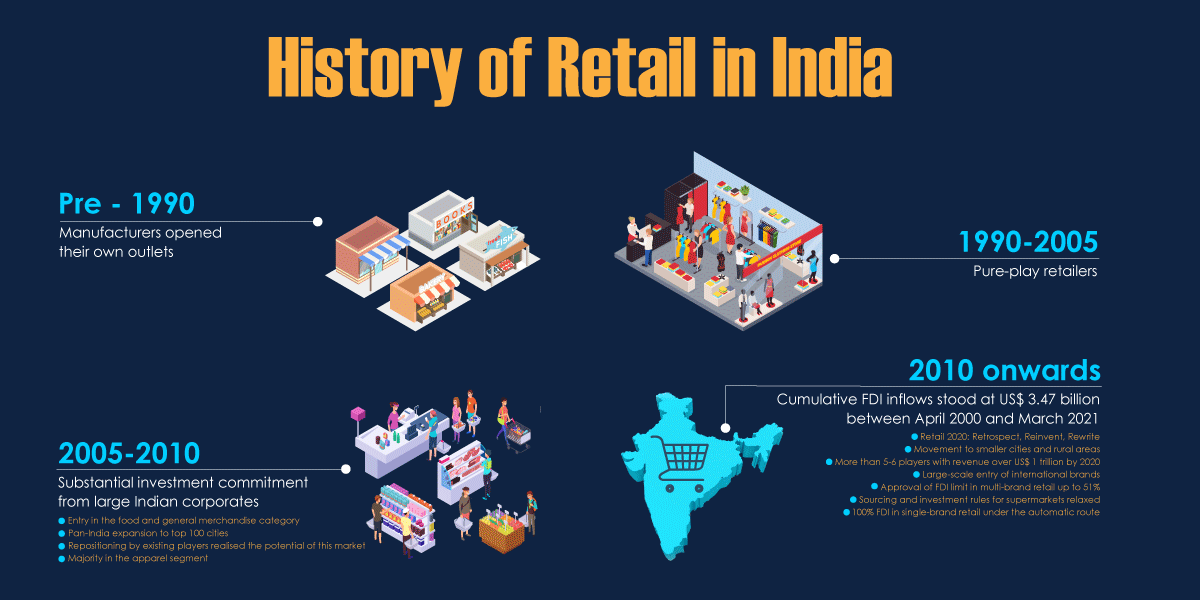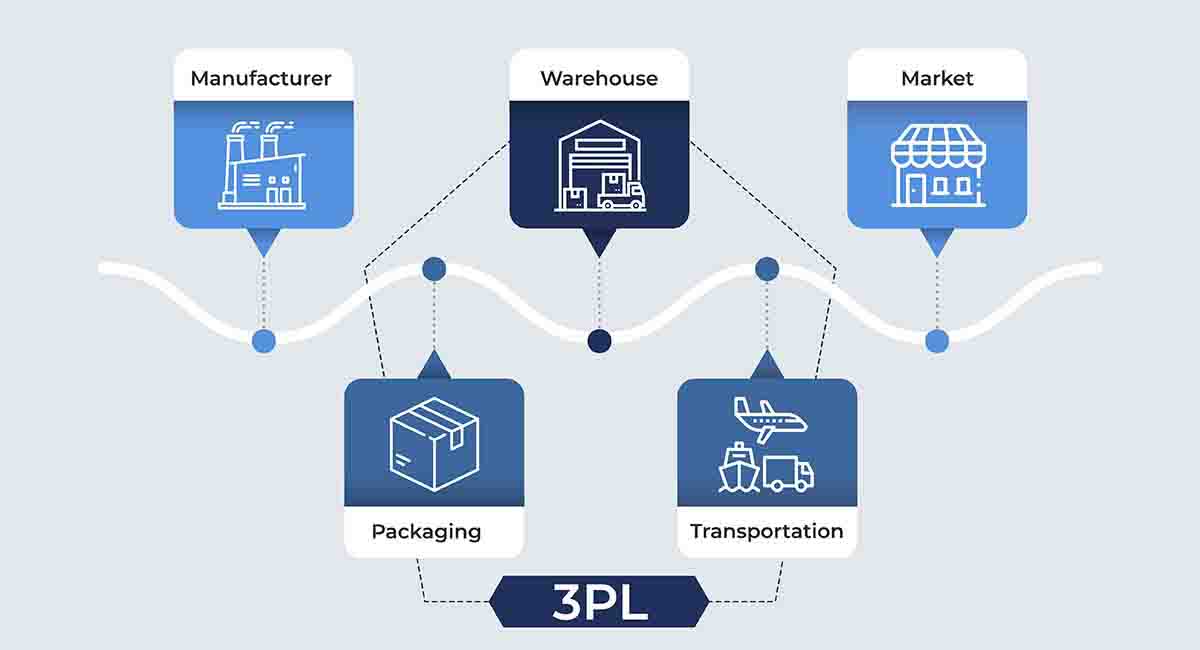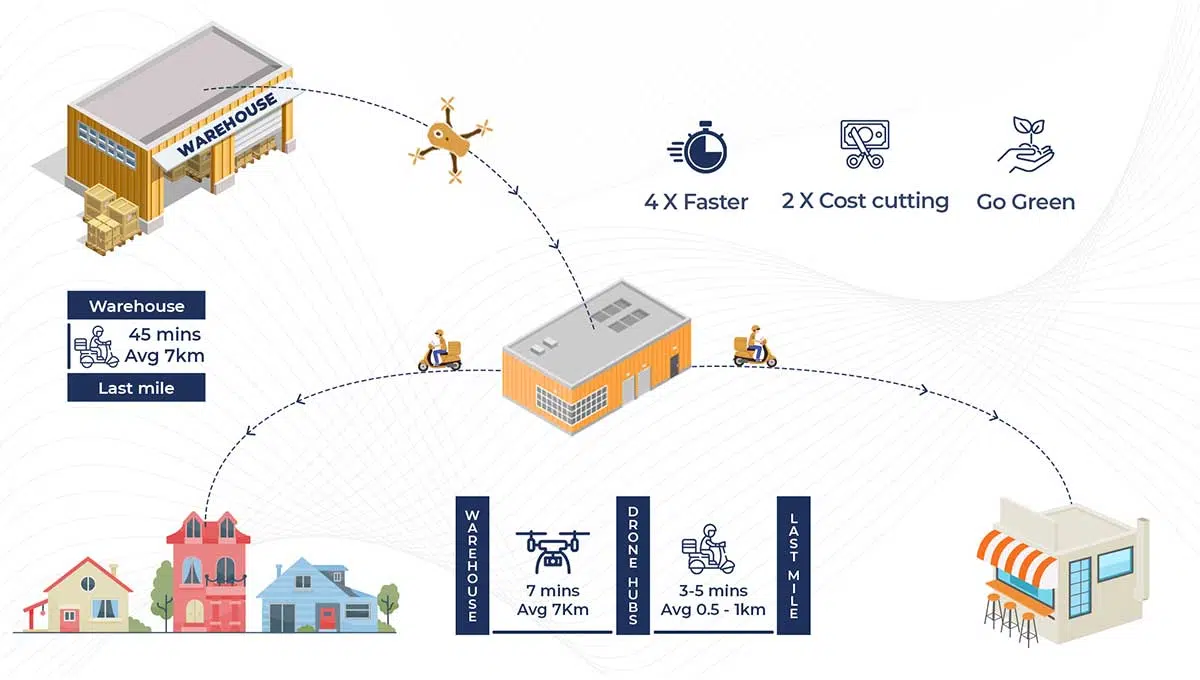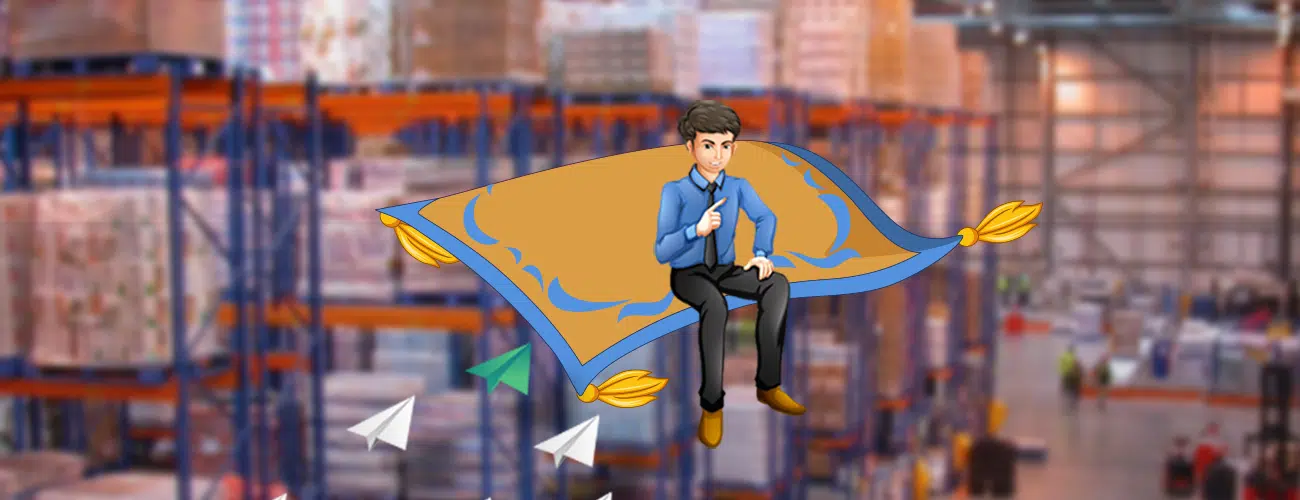D2C business emerging growth opportunity in omnichannel strategy

Consumer brands in India have traditionally marketed to consumers but have sold to customers (distribution partners).D2C enables them to market and sell to consumers.
D2C business entails end to end supply chain management, and hence requires a whole gamut of talent across procurement, factory/warehouse profiles and end-consumer facing salespeople. The sector has grown by more than 100% in 2021 and future hiring is expected to be along the same lines.
D2C brands are seeing a massive upsurge in popularity as they offer a more direct and efficient connection with consumers. These D2C companies set their own prices and control their marketing, working to create a positive customer experience and brand loyalty.
Both the demand and supply sides have contributed to D2C’s emergence and rapid growth. D2C brands are succeeding due to factors such as personalization, creativity, collaboration, and investment, as well as a large, amorphous customer base, mindful shoppers, and rapidly evolving brand loyalty.
D2C comes in 2 flavours:
- Existing manufacturers who diversify their target audience through D2C as part of their omnichannel strategy
- The second being true D2C players, most of whom are digital native.
Logistics aggregators offer end-to-end services, including warehousing and last mile delivery. To provide these services efficiently, they will need to increase their manpower as overall consumerism will go up. Supply chain will also require integration with the upstream and downstream processes.
D2C business models are disrupting the traditional business model and are transforming to a digital experience to engage with more customers.
New trends and opportunities have also led the D2C industry in India. These include an increase in personalized offerings, a greater focus on fulfilling current needs, the adoption of social media and influencer marketing, and the increase in subscription services. In short, the D2C market is expected to thrive in the coming years due to a shift in consumer buying behavior and rise in online presence caused by the pandemic.
The FMCG supply chain is changing quickly, and emphasis is shifting to digital and social media platforms for product distribution. There will be an increase in positions in digital marketing, performance marketing, omnichannel specialists and social media experts, data science, data analytics, user interface and experience design, information security.
The trend has also led to an increase in the number of people employed for automated warehouse, inventory management, website / application design development, data analytics, AI-powered customer support, and the IoT.
A 3PL provider will help D2C brands scale their business in terms of:
- Managing infrastructure and order volumes through adequate manpower and storage space.
- Providing faster delivery
- Low shipping cost
D2C brands have become very popular in recent years. To compete with e-commerce giants and meet customer expectations, D2C brands need to improve their fulfillment capabilities.
By understanding what customers want and need, businesses can develop better products and services that meet those needs. This can be done by collecting data, analyzing it, and using it to improve their offerings. Additionally, businesses can leverage their brand history to create products that resonate with customers.
Today, millennials are increasingly spending money online, and they expect a personalized, convenient experience from brands. This presents an opportunity for brands to provide more value and a better experience to consumers. A D2C approach helps create a consumer centric business while increasing revenue and meeting growth targets.
Latest Blogs
The HR Recruitment Process: More Than Just Hiring People
Walk into any organisation, startup or multinational, and ask what keeps the engine running. It won’t just be tech, products, or processes. It’s people. But...
Read MoreHow Staffing Partners Transform Recruitment & Selection Process
The recruitment and selection process in HRM (Human Resource Management) has evolved significantly, and it plays a pivotal role in shaping the future of any...
Read MoreTalent Acquisition vs Recruitment in Workforce Planning
In many boardroom conversations, “talent acquisition” and “recruitment” are used interchangeably, but the reality is, they’re not the same. While both deal with bringing people...
Read MoreEvolution of Human Resource Management in India
The evolution of human resource management in India is a compelling story of how businesses have transformed their approach to people. What started as a...
Read More5 Key Manpower Supply Strategies for Hiring Better Talent
In today’s competitive job market, ensuring a reliable manpower supply is critical for business continuity and growth. Whether managing large-scale operations or expanding your business,...
Read MoreEmployers’ Intent To Hire in the Manufacturing Sector for Q3 Surges – 57% Keen to Hire
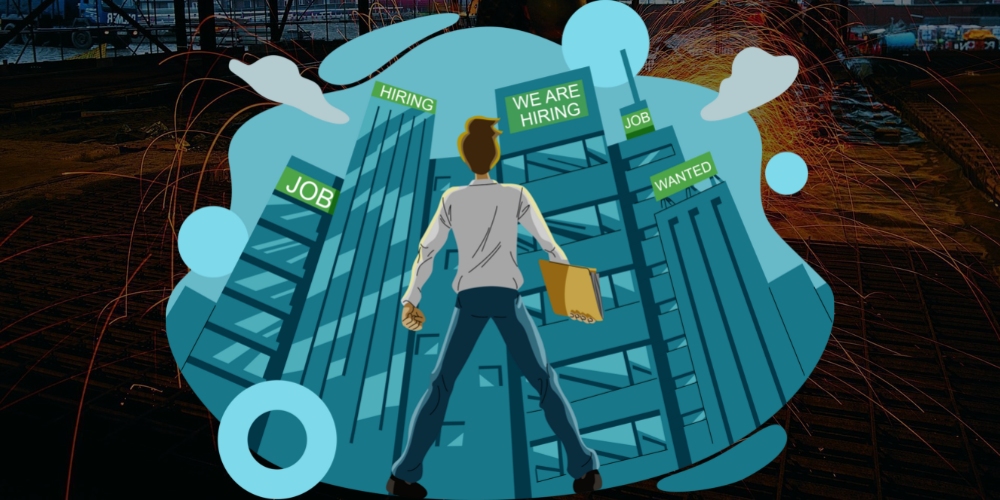
Jobs have bounced back with vigour since 2021. While the global economy has recovered rapidly as it emerged from the COVID crisis and amid a blow of ongoing geo-political conflicts, India’s intent to hire quarter on quarter has steadily risen.
In our latest forward-looking Employment Outlook Report Q3 FY23 (Manufacturing and Allied Industries Edition), we reflect on the hiring sentiment across 14 cities and the manufacturing industry in India, keeping abreast with the dynamics of the current labour market reality. Employers’ intent to hire for October-December 2022 remains strong at 65%, an increase of 4% from last quarter.
The report indicates revolutionised recruitment trends in India, and so does the state of the job market. This implies the talent acquisition process has to attune as per changing business requirements and the heightened speed of digital transformation.
Intend to hire trend in India
The outlook for manufacturing is positive and the sector is positioned to brace up for post-pandemic recovery. Global employment growth has recovered by 2.7% in 2021 and is expected to grow sharply by the end of 2022 and slow down again in 2023. As a result, the unemployment rate will witness a modest decline from 7.2% in 2022 to 6.9% in 2023, from pre-Covid levels of 11.1%.
In India, the hiring intent for this quarter (Oct-Dec, 2022-23) sees moderate growth over the previous quarter (Jul-Sep, 2022-23). Following two consecutive quarters of a substantial rise in the hiring intent, the market seems to be in consolidation mode. The growth came as companies continued to profit from lifting covid-19 restrictions and continuing marketing efforts, owing to a rise in new business gains.
Overall, the trends indicate that an increase in hiring intent is imminent, and the next few quarters could very well see the employment outlook trend cross the 70% mark.
Intent to hire trend by manufacturing sectors
Despite short-term setbacks due to the pandemic, the manufacturing sector has had many positive and robust outcomes. In the comprehensive overview of the mechanics of hiring, job growth, job creation, salaries and their drivers in our quarterly report, this progressive outcome has been further reinforced by data.
The intent to hire trend shows an impressive intent in sectors like Healthcare & Pharmaceuticals and FMCG with a remarkable intent of 92% and 79%, respectively. Electric Vehicle & Infrastructure, Construction & Real Estate, and Textile are some of the sectors that show a moderate intent to hire with a growth range from 4%-5%.
Employment outlook by job level and function
High job opportunities and demand witnessed growth in metro as well as non-metro cities. Junior level and entry level professionals ruled the roost in the hiring marketplace. The demand for entry level talent recorded the best every year.
Manufacturing firms are looking to scale in a post-pandemic world and are staffing their frontlines with young talent. Junior level talent (57%) commands the best demand hierarchically and is closely followed by entry-level talent (51%).
Festive season hiring demonstrated a high demand for young talents to be deployed in sales and marketing. These two are, moreover, the most focused functions companies are boiling down on. The hiring intent for sales topped the most with an impressive 95% high, followed by marketing and Information Technology at 79% and 77%, respectively.
Engineering and Blue Collar (both at 67%) have relatively significant hiring intent as well, and the healthy quantum of hiring in these functions indicates the thrust manufacturing firms are putting on operations.
Intend to hire by business size
The manufacturing industry is vital for global populations’ health and national security, and supply has increased and faced new challenges along the way. Driven by rising demand for increasing asset utilisation in manufacturing industries, large manufacturing firms witness hiring intent of 65% by a massive margin as they ramp up to cater to festive hiring demand and optimise production capacities. Small as well as medium-sized businesses lagged behind large firms by 41% and 39%, respectively.
Attrition trends
The Manufacturing industry seems to be doing a good job retaining talent, except for Healthcare & Pharmaceuticals. All other sectors sit pretty with low single-digit attrition rates.
Healthcare & Pharmaceuticals witnessed a 3.42% increase and Manufacturing, Engineering & Infrastructure witnessed (1.62%) the highest increases in their attrition rates during the Jul-Sep 2022-23 quarter.
Some of the positive indicators to sum up from the employment outlook Q3 report include the following:
- India’s intent to hire for October – December 2022 is at 65%, an increase of 4% from last quarter.
- Healthcare & Pharmaceuticals, FMCG, Agricultural & Agrochemical, Manufacturing & Engineering, and Electric Vehicle & Infrastructure sector are the top sectors with high intent to hire.
- Metro and Tier-1 cities lead the hiring spree with the highest Intent to hire of 91%.
- Mumbai (93%), Bangalore (90%), and Chennai (83%) are among the top cities looking to hire.
- The hiring intent for Junior level roles sees the highest intent to hire of 57%, followed by entry level positions at 51%.
- Sales (95%), Marketing (79%), and IT (77%) talent continue to be the highest in demand, followed by the demand for engineering and blue-collar roles.
- Notable double-digit attrition is observed in the Healthcare & Pharmaceutical Sector.
Despite an inconsistent global economic scenario, the majority of employers remain optimistic about their hiring intent and market demand amid pandemic and geopolitical conflicts.
Do grab the latest copy of TeamLease Employment Outlook Report Q3 FY23 (Manufacturing and Allied Industries Edition)
Latest Blogs
The HR Recruitment Process: More Than Just Hiring People
Walk into any organisation, startup or multinational, and ask what keeps the engine running. It won’t just be tech, products, or processes. It’s people. But...
Read MoreHow Staffing Partners Transform Recruitment & Selection Process
The recruitment and selection process in HRM (Human Resource Management) has evolved significantly, and it plays a pivotal role in shaping the future of any...
Read MoreTalent Acquisition vs Recruitment in Workforce Planning
In many boardroom conversations, “talent acquisition” and “recruitment” are used interchangeably, but the reality is, they’re not the same. While both deal with bringing people...
Read MoreEvolution of Human Resource Management in India
The evolution of human resource management in India is a compelling story of how businesses have transformed their approach to people. What started as a...
Read More5 Key Manpower Supply Strategies for Hiring Better Talent
In today’s competitive job market, ensuring a reliable manpower supply is critical for business continuity and growth. Whether managing large-scale operations or expanding your business,...
Read MoreNational Logistics Policy of India: Shaping Logistics of tomorrow
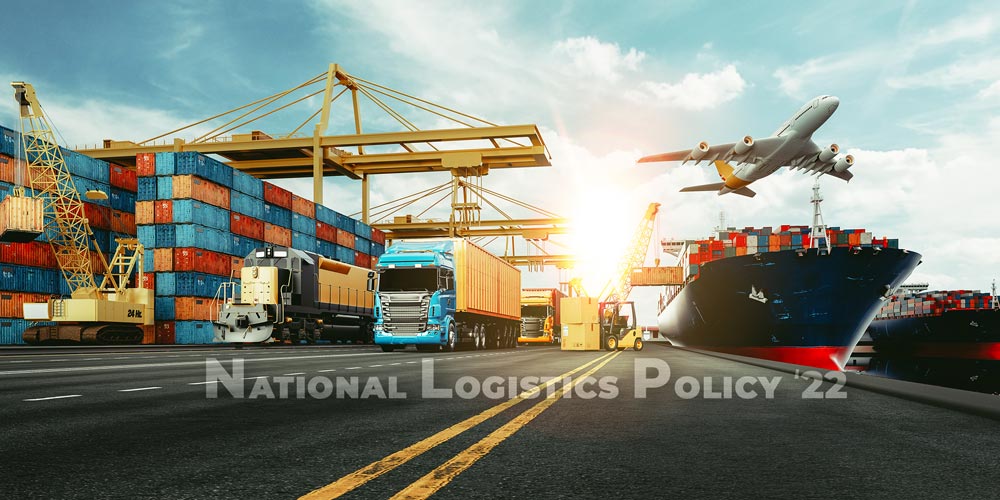
The Government of India issued a press release on September 17, 2022, announcing the approval of a new National Logistics Policy (NLP) by the Union cabinet, following eight years of development.
“The Policy lays down an overarching interdisciplinary, cross-sectoral, multi-jurisdictional, and comprehensive policy framework for the logistics sector.”
Along with the NLP, the government also announced the plan for developing ULIP (Unified Logistics Interface) to revolutionize the logistics sector.
It is anticipated that this policy will transform not just the road, rail, waterway, and air logistics sectors in India but also make India a formidable competitor not only in Asia but in the global market as a whole.
What is National Logistics Policy?
Infrastructure, services (digital systems, processes, and regulatory framework), and human resources all have a role in how effectively logistics are carried out. The Prime Minister GatiShakti National Master Plan (NMP) for multimodal connecting infrastructure to different economic zones is now active.
While the PM GatiShakti National Master Plan will focus on integrating infrastructure and networks, the National Logistics Policy will prioritise the effectiveness of services (including their associated digital systems, legal frameworks, and human resources). This will provide an all-encompassing plan for the growth of the logistics industry as a whole.
The Logistics Division of the Ministry of Commerce and Industry has created a “National Logistics Policy” to offer a uniform policy environment and an integrated institutional system for expanding the logistics industry with the aim of boosting the sector’s competitiveness.
What’s the vision?
“To build a modern, efficient, and resilient logistics sector that seamlessly integrates multiple modes of transportation and leverages the best-in-class technology, processes, and skilled manpower in order to significantly improve country’s logistics performance and reduce logistics costs.”
What are the objectives of the National Logistics Policy ?
- Logistics Efficiency: Reduce logistical costs and storage times to boost the sector’s performance and productivity.
- Multi-modal Transport: Develop multi-modal transport infrastructure, including MMLPs (multi-modal logistics parks), to guarantee multi-modal cargo movement for maximum use of all transport modes.
- Digital Tracking: Utilize digital initiatives to improve in-transit warehousing and ensure freight movement is predictable, visible, and trackable and tracable.
- Sector Modernization: Improvements in the logistics industry will help support modern trade and e-commerce while also establishing a reliable supply chain that can be relied on to facilitate rapid emergency response.
- Excellence in Logistics: To improve the quality of life of the working population, it is important to encourage logistics services to become more professional and high-quality and to create jobs.
- Logistics Democratization: Logistics services should be made more accessible to all segments of society, including farmers and MSMEs
- Raise India’s Logistics Performance Index score from its current 30 to the 25-30 range within the next 5 years.
- India aims to cut logistics costs by 5% of GDP over the next five years (Currently at 13–14% of our GDP)
- Make a system to help you make decisions based on facts so that your logistics ecosystem can function smoothly.
- ULIP (Unified Logistics Interface Platform): The goal is to provide a framework that would allow for the authentication of all logistics-related transactions. The ULIP platform as a whole is divided into three layers, namely the integration layer, Governance layer, and the presentation layer. Under the Integration layer and the Governance layer, 30 logistics systems of 07 ministries and departments covering over 1600 fields have been integrated through 102 APIs with ULIP.
Why was the National Logistics Policy Launched? What are the challenges faced by the businesses?
One could reasonably speculate that India’s logistics have advanced greatly and caught up to international norms as a result of the third-party logistics (3PL) revolution and its accompanying Same Day/Next Day delivery services. Quite the opposite is true.
Indian companies are currently facing a struggle on the logistics front. In India, the cost to carry one metric ton of goods by air is ₹18, by road it is₹ 3.6, and by rail it is merely ₹1.6 per metric ton per kilometer, hence it stands to reason that a sizable portion of India’s goods are transported by rail.
But the reality is about 71% of India’s trade is conducted via roadways, whereas just 17.5 % is transported via rail, and a similarly small percentage is conducted via waterways. If you’re wondering why, it’s because India simply doesn’t have enough rails or trains to handle the volume of goods being transported.
Moreover, in India, passenger and freight trains share the same tracks, with the latter being given lower priority. There will consequently be holdups because of this Thirdly, you should always go with multi-modal transport for last-mile and first-mile shipments when sending anything by train.
Most businesses in India prefer to use road transport, where they simply reload trucks to get from A to B, rather than dealing with the complexities of the country’s complex logistics system, which involves more than 20 government agencies, 37 export promotion councils, 500 certifications, and 10,000 commodities.
How’s National Logistics Policy going to help in employment and employability?
In India’s logistics industry, qualified workers are in short supply. The Logistics Skill Council predicts that by 2022, the logistics industry will have increased to 2.2 Crore employees. Still, closing significant knowledge gaps in the logistics industry is essential if we’re going to satisfy this demand. Some professions, like truck drivers, find it difficult to attract and keep employees. This is because people have a negative connotation toward these occupations, and they are paid less than average. Further, workers have few options for making up for the salary they lose while in training. Training programmes don’t always cater to the needs of individual jobs. Coupled with the industry’s high turnover, this reduces the financial motivation for businesses to invest in staff training. Telematics, warehouse automation, mechatronics, etc., are just a few examples of the specific talents that will be necessary in the logistics industry as technology advances.
Employment: The combined efforts of the federal, state, and private sectors, according to experts, may produce massive job and entrepreneurship prospects for thousands of individuals. More than 2.2 crore people in India rely on the logistics industry for their livelihood; with this strategy in place, a large influx of new workers is anticipated.
Employability: The supply chain’s back-end operations and planning are where India is really starting to shine as a global powerhouse. So, it’s a great chance to be at the forefront of providing skilled labour to meet the demands of international supply chains.
This can only be accomplished if both the national and state governments are equipped to the teeth with state-of-the-art technology.
The Department of Personnel Training (DoPT) is responsible for the training of government officials; hence, they have developed the Integrated Government Online Training (IGoT) platform to create mandatory certificate courses with evaluation. It’s an online school for civil servants across the country.
The National Logistics Policy of India is touted to be a policy that is going to transform the logistical landscape of the country and is expected to be the next big step in making India ‘Atma Nirbhar’. Will this big step help India Inc. reach the $5 trillion mark? Only time can tell.
Latest Blogs
The HR Recruitment Process: More Than Just Hiring People
Walk into any organisation, startup or multinational, and ask what keeps the engine running. It won’t just be tech, products, or processes. It’s people. But...
Read MoreHow Staffing Partners Transform Recruitment & Selection Process
The recruitment and selection process in HRM (Human Resource Management) has evolved significantly, and it plays a pivotal role in shaping the future of any...
Read MoreTalent Acquisition vs Recruitment in Workforce Planning
In many boardroom conversations, “talent acquisition” and “recruitment” are used interchangeably, but the reality is, they’re not the same. While both deal with bringing people...
Read MoreEvolution of Human Resource Management in India
The evolution of human resource management in India is a compelling story of how businesses have transformed their approach to people. What started as a...
Read More5 Key Manpower Supply Strategies for Hiring Better Talent
In today’s competitive job market, ensuring a reliable manpower supply is critical for business continuity and growth. Whether managing large-scale operations or expanding your business,...
Read MoreRevamping Business with Workforce Formalization

Organizing the Unorganized Workforce for Long Term Benefits and Risk Mitigation
India has been aspiring for a formalised workforce post-liberalisation of the economy in 1991 when 92% of the workforce were in informal jobs. Formalization means moving the informal or unorganized workforce into the formal workforce. The unorganized sector contributes nearly 50% to the GDP , and the proportion of the informal workforce is 83.5% of the total workforce in the country. On the flip side, the organized sector with only 10% of the workforce contributes to more than 50% of the GDP. This has been a difficult gap to bridge and we still have a long way to go. Technology, new business models and staffing innovations can be key enablers of this transformation, especially via the formalisation of the workforce.
Further, the GAPS framework (Ghost employee elimination; Attrition reduction; Productivity boost with Tech; Statutory compliance) provides a proven roadmap to workforce formalization for business success. This game-changer concept of the GAPS framework will help smooth business flows and operations and foster the formalization of the workforce.
This will support streamlining of social security benefits for all informal workers. This would mitigate the complexity associated with starting and running businesses.
The report on Workforce Formalisation aims at providing a roadmap for businesses to leverage workforce formalization to reinvent themselves and discover breakout growth, and covers the following critical elements:
- Employer’s willingness to formalize the informal workforce
- Major challenges faced by employers in engaging with informal workers
- Measures undertaken by employers for workforce formalization
- Business Impact with GAPS Framework
FMCG, FMCD and Healthcare Sector Insights
The FMCG sector is the 4th largest employer in the country and contributes around 10% to the national GDP with massive employment opportunities. FMCG retailers are hiring to achieve greater business agility and position themselves to respond to the increased and continuing uncertainty caused by the pandemic.
Our recent Employment Outlook Report for Q2 FY23 captures that the FMCG sector’s intent to hire stands at 73% inching towards a 5 percentage points increase from the last quarter. This sector is largely constituted by 50% of the informal workforce and the employers are willing to formalize ensuring opportunities for income security, livelihoods and entrepreneurship.
The pandemic-induced situation has highlighted the need to improve health protection in India for a large part of the country’s population. As the informal economy relies heavily on centralized health care, there is an urgent need to protect people from economic downturns and ensure that the health infrastructure is adequate.This is an opportunity to bring a large portion of people who are currently without treatment, especially those who are part of the unorganized sectors of the economy, under a robust health infrastructure.
A speaker from one of our latest webinars spoke about how the health insurance of the blue collared workforce during COVID was taken care of.
-This benefit motivated them to stay longer.
-An apprenticeship programme was launched to ensure there is a boost in productivity as well as provide safety to the employees. Their aim was also to convert them into permanent employees in the future.
Employers in these 3 sectors face a variety of challenges -the topmost being the managing of wages (45%), followed by lack of adequate skills/talent (21%) and frequent absenteeism (15%).
Outcomes
As per the report on Workforce Formalisation, nearly half, 43% of all employers treat formalisation as a priority, and employers across sectors are split right down the middle on the question of priority accorded to formalization. Employers of large organizations report being greatly inclined towards prioritizing adopting formalization. An overwhelming proportion of this group (80%) has already initiated major steps in ensuring a formalised workforce.
The FMCG sector is still respected by many and is considered the best place to work. The challenges faced by the FMCG sector today contribute to higher staff turnover, as talent chooses to move to other industries. This can be addressed by addressing the key areas: Absence of social security, lack of employee engagement, low wages, frequent business change, restructuring, and lack of leave and medical benefits. Good training and upskilling is a key to retaining talent and reducing attrition.
Healthcare organizations must manage the transition of current employees to new and different ways of working. They must also consider the needs of a future workforce that can deliver health outcomes in a health care system fundamentally different from today. Healthcare would adhere to statutory compliance as a step towards workforce formalization.
Way Ahead
As per the report on Workforce Formalisation, 61% of the employers in these three sectors expect attrition reduction to be the topmost business benefit as a consequence of formalization. In our recent webinar on ‘Formalisation of Workforce for Productive Outcomes, one of the speakers spoke a few things about how soon organizations will implement formalisation.
Firstly, how companies can train their employees to develop the right skill set. Further, provide them with skill badges and make them feel recognised and part of the system. Secondly, to provide insurance plans to gig workers in remote areas. Also, there was also a discussion about the Ayushman Bharat Scheme launched by the government.
Organizations should not look at this as a cost-saving or a CSR activity but rather ensure employees feel a sense of belongingness. A stable workforce performs better. The USP has to be the safety of employees at all levels. Formalising the workforce entails not only treating the employees with social security benefits but also having a reward and recognition programme.
Formalisation of the Workforce will also lead to a boost in productivity as well as the economy. The composition of People, Process and Technology should be evolving as a support to more formal employment.
The Wheel of Reinventing Continues
Flexible sourcing provides opportunities to explore alternative practice models and partnerships, enables the transition to flexible work structures and methods, and ensures that organizations have the right skills at the right time to respond. This enables companies to find the right mix by focusing on personal availability.
56% Employers are priortising Workforce Formalisation with Third Party Payroll, where 64% have initiated major steps and 67% are planning to implement within a year.
Workforce formalisation will be an immense change for businesses and will not only reduce attrition, enhance productivity, optimize workforce but also make them realise that the benefits of third party payroll outsourcing could be an important step for their overall success.
Click here to download your copy of the Report on Formalisation of Workforce.
Latest Blogs
The HR Recruitment Process: More Than Just Hiring People
Walk into any organisation, startup or multinational, and ask what keeps the engine running. It won’t just be tech, products, or processes. It’s people. But...
Read MoreHow Staffing Partners Transform Recruitment & Selection Process
The recruitment and selection process in HRM (Human Resource Management) has evolved significantly, and it plays a pivotal role in shaping the future of any...
Read MoreTalent Acquisition vs Recruitment in Workforce Planning
In many boardroom conversations, “talent acquisition” and “recruitment” are used interchangeably, but the reality is, they’re not the same. While both deal with bringing people...
Read MoreEvolution of Human Resource Management in India
The evolution of human resource management in India is a compelling story of how businesses have transformed their approach to people. What started as a...
Read More5 Key Manpower Supply Strategies for Hiring Better Talent
In today’s competitive job market, ensuring a reliable manpower supply is critical for business continuity and growth. Whether managing large-scale operations or expanding your business,...
Read MoreWhat is ONDC in India & how is it going to transform the job market

The open network for digital commerce ONDC India pilot programme, which intends to make online shopping accessible to everybody and make it democratized and decentralized, was officially unveiled in India on April 29 of 2022. Union Minister of Commerce and Industry Piyush Goel has called the ONDC plan a “game changer,” as it will foster an open platform for all elements of e-network product and service exchange. It is estimated to be a $200 Billion opportunity by 2027
What is ONDC? Here’s an analogy to elaborate:
Now, here in India, we have a favourite snack that is sure to please anyone: hot chips. These are chips, and they come in a wide variety of flavours and types; they may be made from a wide range of vegetables and fruits, and they taste great.
But let’s say one has aspirations of expanding her business online and becoming a household name in all of India. Well, one option is for him to launch a website and start selling his chips online, but doing so will require a sizable initial investment for a number of reasons: she will need to create a website or online storefront, which isn’t impossible; she could, for example, use the services of an e-commerce technology company; however, she will also need to deal with cataloguing, inventory management, dynamic pricing, order management, order fulfillment, and optimization of delivery costs. Some or all of these features could be provided by an e-commerce technology firm; however, even if this happens, will customers still want to buy hot chips from him online? Will his company’s name even be recognised? But online it will be really, really hard for her to get seen; she will need to spend huge amounts of money on a website or social media ads to make his products stand out, and this is why many small business owners in India choose to stay offline.
They may have to compete with just one or two other establishments in the area if they’re located by the roadside. There isn’t much competition, but in the online environment, your hot chip business is in direct competition with every other online hot chip business. The sheer investment of time, money, and effort required to compete with these giants is enough to discourage many would-be entrepreneurs from even trying. However, as of late August, Indian marketplace sellers now have another option: listing their wares on an e-commerce platform like Amazon or Flipkart, where they will receive extensive promotion. If their items perform well on these marketplaces in terms of sales volume and customer satisfaction, they will receive recommendations simply by being present on these sites. As a result, vendors can earn far more than they would have by selling just to end users through their own website or physically. The appeal of these e-commerce platforms lies in the fact that they have lowered the bar to entry for sellers, allowing them to feel secure and comfortable displaying their wares on the sites.
A natural follow-up question is how you plan on making purchases from ONDC without access to their mobile app or online store. Though, you won’t have to do anything; it’ll happen automatically. When an existing platform joins the ONDC India network, all of the goods that are currently offered on that platform are also added to the ONDC network. So, if you’re shopping for garments on, say, Flipkart, and let’s pretend for the sake of argument that Flipkart has joined ONDC, you may also find clothes that are offered on other platforms.
How will ONDC work and how will it ensure a democratized and decentralized network?
Any ONDC-compatible app can be used by buyers to contact merchants on the platform. Through these partnerships, retailers will manage all shipping and handling. Services like ledgers and payment processors will be available to vendors through ONDC as well.
In order to avoid any confusion, when it comes to e-commerce platforms, ONDC India is neither a replacement nor a rival. It is an open-source platform that is unbiased and establishes protocols for cataloging, vendor matching, and price discovery. It does not follow a platform-centric model; thus, the Indian government hopes it will unify the Indian online market without any bias. We already have companies like Paytm Mall, PhonePe, Ekart (Flipkart’s logistics arm), and Dunzo figuring out how to integrate their offerings with ONDC, while others like ITC, Unilever, Dabur, Nivea, Shopify, Google, Meesho, and Snapdeal have shown interest. Since ONDC is not an app, an aggregator, or a competitor, they have expressed interest and are cooperating with ONDC.
There won’t even be a dedicated app for ONDC. ONDC India is expected to be the next UPI of the e-commerce industry. The way UPI has favorably influenced the Indian payments industry, ONDC is likely to mirror its success. The central government and other specialists in the commerce business are exuding a great deal of optimism and belief. However, before emerging as a winner, any effective concept must overcome numerous challenges and issues.
How will ONDC help in creating jobs?
Because ONDC is neither a platform nor an intrinsic source of new employment opportunities, it will be up to the participants or players themselves to drive development through the expansion of the network. Third-party logistics providers, for instance, will likely play a significant role in getting products to customers. Between 30-50% more delivery positions are predicted to be created by the end of the current fiscal year because of the ONDC initiative.
Furthermore, ONDC will greatly increase the need for 3PL as many large e-commerce enterprises and retailers are considering making the transfer from captive logistics to 3PL. The third-party logistics industry is expected to play a significant role in the supply chain operations of e-commerce, quick commerce, and conventional stores. It is estimated that 8 lakh people will enter the 3PL sector by the end of the current fiscal year.
Apart from this, jobs will be created from the integration side of things. ONDC will expand its network through four integration channels, and the jobs expected to be created will be as follows:
- Connecting buyers to the network: Jobs such as building Web Apps, and mobile applications and developing a buyer interface
- Connect Sellers to the network: Jobs to develop a seller interface and a catalog team to develop a crisp detail page for buyers to know more about the product/service they want to buy/use.
- ONDC Gateway: Jobs in maintaining the ONDC gateway, a network application that will notify all seller-side applications of a search request from a buyer-side application based on a set of criteria like domain or location, are also to be anticipated.
- Technology Services: Gainful employment creating and supplying software and other technological add-ons for the remaining three integration channels.
Conclusion:
The retail and e-commerce market in India is poised to develop into a colossal sector as a result of the country’s rapidly expanding consumer base. ONDC India will democratize and decentralize the e-commerce and retail sector, with small and medium-sized enterprises having a bright outlook. Changes in lifestyle and habits are a direct result of increased ethnic variety. Online shopping as a whole will continue to expand as a result of the ONDC initiative. As mentioned earlier, the job market for delivery and tech would increase significantly. There will be an increase in demand for gig work as well.
Latest Blogs
The HR Recruitment Process: More Than Just Hiring People
Walk into any organisation, startup or multinational, and ask what keeps the engine running. It won’t just be tech, products, or processes. It’s people. But...
Read MoreHow Staffing Partners Transform Recruitment & Selection Process
The recruitment and selection process in HRM (Human Resource Management) has evolved significantly, and it plays a pivotal role in shaping the future of any...
Read MoreTalent Acquisition vs Recruitment in Workforce Planning
In many boardroom conversations, “talent acquisition” and “recruitment” are used interchangeably, but the reality is, they’re not the same. While both deal with bringing people...
Read MoreEvolution of Human Resource Management in India
The evolution of human resource management in India is a compelling story of how businesses have transformed their approach to people. What started as a...
Read More5 Key Manpower Supply Strategies for Hiring Better Talent
In today’s competitive job market, ensuring a reliable manpower supply is critical for business continuity and growth. Whether managing large-scale operations or expanding your business,...
Read MoreTale of New Retail : Evolution of Retail in India

Back in the day (Pre-1990), all we had were Kirana stores and storefronts that manufacturers would set up. The retail sector has grown exponentially. The tale of new retail is consistently evolving and here’s a snippet of our Retail Industry Whitepaper depicting exactly that
From an estimated $690 billion in 2021, Invest India predicts that by 2032 the size of the Indian retail industry will have grown to $2 trillion. NASCOM has released yet another study predicting a 25 million-person increase in employment within the retail sector in India. That’s a massive segment of the workforce, and it’s one that’s likely to keep changing as time goes on thanks to the emergence of new, specialised positions.
India has a sizable retail sector, but about 84% of it is unorganized
A large portion of India’s 1.3 billion people shop at unorganised retail establishments since they are convenient and familiar. When comparing India to other industrialised countries like the United States and the United Kingdom, India has the largest proportion of general trade. With almost 665,000 communities in Tier 2+, its secondary market is massive.
How’s the retail sector changing in India?
With the evolution of retailing in India, Retail brands are moving towards omnichannel and want to have more touchpoints with the customers. An omnichannel approach allows businesses to meet the demands of modern
consumers in every way. With the advent of omnichannel retailing, consumers now have multiple options for making purchases, including conducting research online and making a purchase in-store, making a purchase while in-store using a mobile device, and making a purchase while in-store using a mobile device and then purchasing a different variant of the same product online. It’s perfect for those who have trouble making decisions, are constantly on the go, appreciate high-tech gadgets, shop at malls, and surf the web late at night.
It’s a huge advantage for businesses to be able to keep tabs on their customers’ every move and have a 360-degree view. Brands can learn from customers’ complaints on one channel and their purchases on another by consolidating data from all channels. Customers’ desire for individualised care is met as a result of the company’s ability to proactively anticipate their requirements and meet them in a manner that is both timely and convenient. Customers appreciate the feeling of being appreciated and cared for in this way.
There is a greater demand than ever before for omnichannel retail. Due to the surge of online sales after the COVID-19 pandemic, it has become a vital component of any profitable retail and e-commerce enterprise.
Phygital refers to the trend of businesses merging the digital and physical worlds in an effort to create loyal customers.
An omnichannel approach that takes into account phygital channels is an excellent way to meet the needs of today’s consumers.
This financial hurdle may discourage brands who are hesitant to integrate phygital channels and omnichannel into their strategy, despite the enormous economic gains that can be realised by offering omnichannel experiences for customers and visitors.
It is expected that the adoption of the omnichannel strategy in retail will significantly increase the percentage of shoppers who make a purchase. Simply put, the more the number of conversion platforms you provide that work together, the greater your overall conversion rate will be. This will lead to gains in not only client retention but also brand lifetime value. If implemented properly, omnichannel retailing can significantly reduce overhead costs.
How would this growth in retail translate to jobs?
- With the festive season around the corner, hiring across e-commerce and retail is expected to grow by 30-40%, and according to our estimates, e-commerce businesses will add more than 5 lakh temporary jobs. Hiring is particularly strong in quick commerce, QSRs, retail stores, and FMCG.
- As per our estimates around 2 Lakh jobs are expected to be added by the end of this fiscal year in the retail sector alone
- With evolution of retailing in India, the omnichannel retailing is also evolving, allied industries, for example, 3PL, will employ a lot more to contain the demand. The total number is estimated to reach 8 Lakh by the end of 2022
- FOS (feet on street) and in-store promoters will be in high demand. In the retail industry, hiring for customer-facing roles in sales and commercial operations, as well as other departments, is picking up steam on the basis of increased demand and an optimistic forecast for the impending festive season.
Even though the retail industry has had a number of difficulties over the past two years, the pandemic has presented an opportunity for a long-overdue significant retail reset, which may inspire many stores to find a more secure and profitable footing. As a result of technological advancements, the retail industry has shifted its focus from products and locations to customers. Businesses are now better able to share information about discounts and inventories across all of their stores.
With the retail sector growing at an incredible rate, jobs in this sector and allied sectors are going to evolve, and niche roles catering to different segments in the market will come into the picture.
The future of Evolution of Retailing in India has seen its share of struggles and triumphs, but a new era is about to begin.
Latest Blogs
The HR Recruitment Process: More Than Just Hiring People
Walk into any organisation, startup or multinational, and ask what keeps the engine running. It won’t just be tech, products, or processes. It’s people. But...
Read MoreHow Staffing Partners Transform Recruitment & Selection Process
The recruitment and selection process in HRM (Human Resource Management) has evolved significantly, and it plays a pivotal role in shaping the future of any...
Read MoreTalent Acquisition vs Recruitment in Workforce Planning
In many boardroom conversations, “talent acquisition” and “recruitment” are used interchangeably, but the reality is, they’re not the same. While both deal with bringing people...
Read MoreEvolution of Human Resource Management in India
The evolution of human resource management in India is a compelling story of how businesses have transformed their approach to people. What started as a...
Read More5 Key Manpower Supply Strategies for Hiring Better Talent
In today’s competitive job market, ensuring a reliable manpower supply is critical for business continuity and growth. Whether managing large-scale operations or expanding your business,...
Read MoreFestive season boosts manpower demand in India

Festive season hiring is in full swing, and companies have started to build their manpower capacity to ensure high festive sales. Businesses have a fantastic opportunity to increase the visibility and accessibility of their items in the marketplace during the festive season.
A rise in consumer purchasing power during the festive period contributes to high sales across all consumer product categories. With a rebound in urban demand and discretionary spending, as well as price increases to offset the effects of rising raw material prices, the FMCG sector’s revenue growth is anticipated to double in the upcoming fiscal year.
To support the increase in sales, productive manpower requirement rises. With advanced recruitment technologies, organisations can increase the efficiency of the hiring process to have productive manpower deployed in response to today’s competitive market demands.
The demand for skilled workers in India has been growing, and with the current pandemic, acquiring new skills is particularly important. For candidates today, being able to adapt to changes in technology is key in every industry, as digital transformation is becoming more and more common.
Rise in consumer sentiments with the easing of pandemic wounds, especially during the festive season, there is an increased demand for in-store promoters, counter staff, merchandisers, customer support, onboarding partners, auditing, packing, customer service, loader-unloader and sales roles.
The development story of hiring in the festive season is expected to be scripted as:
Additional Job Creation during Festive Season
Hiring momentum is back, reversing the trend of the past two years, which had seen reverse migration, uncertainty about revival, and shutdowns. The Indian market seems to have come back stronger, with most sectors indicating an increase in hiring trends. There is an expectation of at least 5 lakh additional jobs to be created owing to the festive season, which is 20-25% higher than the demand in 2021.
Mobility of the workforce has been a challenge, but the post-pandemic workforce has been particular about their hygiene and is looking for better pay opportunities. The average pay scale for seasonal employees is projected to be 8-10% higher in 2022 than last year. Pent up salary hike pending now paves the way for to a 25% hike in order to retain B2C salespeople.
There has been a rise in demand in metro cities where Bengaluru, Delhi, and Chennai have showcased higher growth due to massive internet adoption, infrastructure development, and higher digital adoption by small and medium enterprises (SMEs).
Talent Demand Soars High in FMCG & Consumer Durables Sector
The Indian Consumer Durables/Electronics industry is shaping up to hire temp staff on a short-term basis for the festive season, predominantly in the role of in-store promoters. The hiring is going to be to the tune of adding 20% more workforce to their existing base for a period of 45-60 days on average. The demand for Feet-on-Street salespeople (FOS) has been back with a bang ever since the summer. Hiring by consumer-facing sectors across functions like deliveries and logistics is expected to increase by 25-30%.
In order to maintain this momentum, every business is prioritising growth and needs to increase its operational efficiency. Achieving that is only possible when the people, processes, and tools are in sync.
Here is a case study into how the most formidable brand in consumer electronics, home appliances, IT hardware, and mobile communications space eliminated sourcing challenges to increase operational efficiency.
Although the long-term forecast for the FMCG sector is still favourable, there are still difficulties in the short term. The production process, retail and logistical channels, daily operations, consumer insights, and communication must incorporate resilience. It ought to be included in how businesses hire, train, deploy, and manage employees.
The FMCD sector typically performs well during the festive season with a massive increase in sales. With new product launches and an uptick in demand for white goods during the festive buzz, it is crucial to employ skilled and productive counter staff and in-store promoters for desirable business outcomes. These are supplemented with bonuses and incentives to employees to ensure retention and business momentum.
Even though the high inflation will dent some demand, companies are cautious about the numbers overall but are optimistic that the sales will increase over the last two years. Firms are looking at a 20% increase in hiring for temporary staff.
Further exploring newer engagement models that are successively making more opportunities for staffing, contracting, and gig workforces across sectors. The supply chain sector has coped with several bottlenecks over the past few months due to the pandemic and is finally starting to ramp up its recruitment processes to support consumer needs.
To achieve the set goals, organisations must leverage national staffing vendors to ensure tech-led payrolling operations, end-to-end employee management with the right sourcing, training solutions, adherence to compliances, and productivity tracking.
Latest Blogs
The HR Recruitment Process: More Than Just Hiring People
Walk into any organisation, startup or multinational, and ask what keeps the engine running. It won’t just be tech, products, or processes. It’s people. But...
Read MoreHow Staffing Partners Transform Recruitment & Selection Process
The recruitment and selection process in HRM (Human Resource Management) has evolved significantly, and it plays a pivotal role in shaping the future of any...
Read MoreTalent Acquisition vs Recruitment in Workforce Planning
In many boardroom conversations, “talent acquisition” and “recruitment” are used interchangeably, but the reality is, they’re not the same. While both deal with bringing people...
Read MoreEvolution of Human Resource Management in India
The evolution of human resource management in India is a compelling story of how businesses have transformed their approach to people. What started as a...
Read More5 Key Manpower Supply Strategies for Hiring Better Talent
In today’s competitive job market, ensuring a reliable manpower supply is critical for business continuity and growth. Whether managing large-scale operations or expanding your business,...
Read MoreThird Party Logistics (3PL): Future of Multi-Client Fulfilment for E-commerce
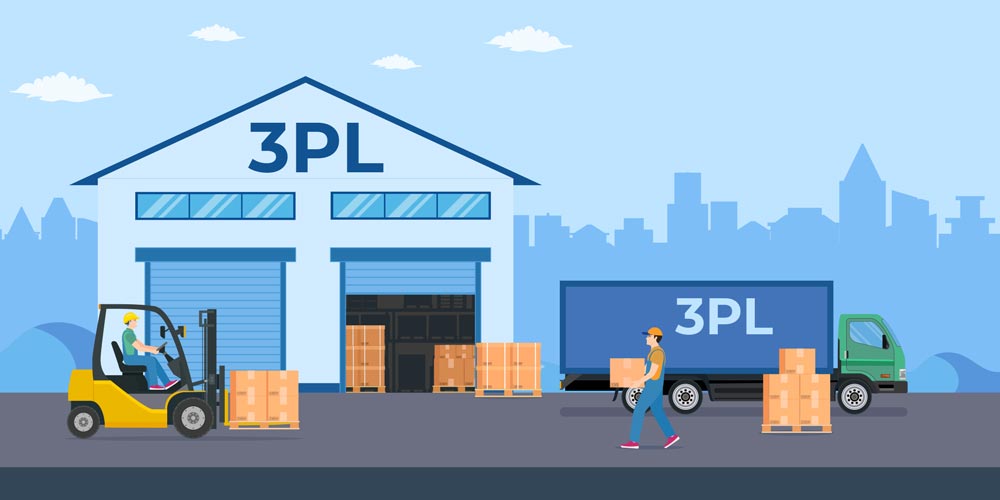
Third party logistics, or 3PL, refers to a layer in the supply chain that assists with logistics. While this may sound complicated, it is actually quite straightforward. To put it another way, if your company manufactures a product and then delivers it directly to customers, you have a 1PL.
If you then involve shippers like DHL or FedEx, you have a 2pl. Finally, let’s say you supply a warehouse with your product, which then ships it to the customer on your behalf, this is known as 3PL.
A 3PL can help with freight, warehouse management, distribution, and even industry-specific services like cold storage for food companies. However, if you’re running an e-commerce business, you’ll need a logistics operator who specialises in inventory management, fulfilment, packaging, and returns.
Between 2021 and 2025, the Indian third-party logistics industry is expected to grow by $10.7 billion. By 2025, the 3PL market in India is expected to grow by 8.36 percent CAGR, according to industry estimations.
Companies that don’t have the time or skills to deal with logistics often hire 3PL services. These services can help in cost savings and time by giving them logistics expertise, streamlining supply chains, and reducing waste. All in all, it provides a total order fulfilment service, which will translate to excellent customer service.
3PL helps companies grow leaner and helps businesses focus on their core competencies. They assist companies to optimize their operations, bringing more efficiency and, in return, helping them scale.
As we’ve established what a 3PL is and why it’s necessary for companies today, let’s talk about how big it can get:
The e-commerce growth story has altered dramatically throughout the years. For a long time, e-commerce companies preferred to handle all their own logistics in-house to speed up the delivery process. As more 3PL companies or specialised firms entered the market, companies began using third-party logistics (3PL) to complete their deliveries, and this transformed the market dynamic.
3PLs are being relied upon by brands, traditional retailers, and even horizontal marketplaces in order to meet the country’s expanding demand. Companies realised that outsourcing logistics helped by providing a management system that improved cost-effectiveness and also provided customer satisfaction; thanks to reduced timelines and logistical efficiency.
It’s no secret that the third-party logistics (3PL) market is booming. Seeing the likes of Delhivery, TCI Express, XpressBee, and others soaring to new heights, it’s safe to say that 3PL is here to stay.
Third-party companies like Delhivery, Ecom Express, and Xpressbees are used by Meesho and direct-to-consumer brands.
Renowned e-commerce and e-grocery brands like BigBasket, JioMart, Flipkart and BlinkIt have all relied on Zyngo EV Mobility as their logistics-delivery partner.
Additionally, 3PLs are also shifting their focus to the burgeoning Quick-commerce industry. Shadowfax Technologies collaborates with online marketplaces such as Flipkart Quick, BigBasket and quick-commerce platforms like Zepto, and Swiggy Instamart.
The third-party logistics (3PL) market is expanding at a rapid pace, thanks to advancements in technology and infrastructure such as e-way bills, fast-tags, e-invoicing, and GPS-based toll collection, as well as numerous government legislation.
It is becoming increasingly necessary for logistics service providers all over the world, in order to help supply chain management and lower the prevalent logistics cost, innovate and simplify complex business operations. 3PL service providers use technology such as GPS, barcodes, RFID, drones, the Internet of Things (IoT), Artificial Intelligence (AI), cloud computing, robotics, and blockchain to reduce the amount of physical labour required in the supply chain.
What makes 3PL cost-effective?
The company can focus on its core operations thanks to third-party logistics, which makes the supply chain more cost-effective and responsive. In addition, third-party logistics providers can alert companies to supply chain errors that could be expensive and risky. 3PLs also help to reduce inventory holding costs by offering industry forecasting.
A third party logistics provider (or 3PL) manages the entire shipping process, whether domestic or international, to guarantee that your goods arrive on time. In short, a third-party logistics (3PL) provider may handle every aspect of a shipment, from the first negotiation of prices to the final delivery to storage, transportation, and loading. With a 3PL, the entire logistical process can be managed on a single platform, thanks to tools and processes that have been precisely created and trusted for use. The majority of third-party logistics (3PL) service providers are also open to adapting or integrating their digital platforms with those of the organisations they collaborate with.
Most products’ total prices include significant amounts of money spent on logistics. It may sound counterintuitive, but outsourcing warehouse management and transportation management can save a lot of money if done correctly. Customers of 3PLs are plentiful. This enables a third party logistics to secure lower rates for warehouse space, shippers, and domestic transportation suppliers. Seasonal inventory fluctuations can be accommodated because there is more space available within each warehouse. In order to adapt rapidly to changing market conditions, a well-established 3PL will have useful historical market information and data at its disposal.
Working with a third party logistics (3PL) provider, companies can save time and money by gaining access to the knowledge and resources necessary to manage supply chain logistics effectively.
How is Warehousing different from 3PL delivery?
Many people use the phrases “warehouse” and “fulfilment centre/delivery hub” interchangeably, however, these terms have very different meanings. While they are both big warehouses for firms that sell items, the use cases and services they provide are usually quite different.
To describe warehousing, we’re referring to an organisation which holds goods for an extended period of time. Inventory is stored in bulk in warehouses, which are vast, industrial facilities created specifically for this purpose.
As part of the supply chain, a fulfilment centre/delivery hub serves as the hub for all logistics activities required to move a product from seller to buyer. Order picking and processing, packaging, and shipping are all handled by this system. Fulfilment centres are used by third-party logistics (3PL) providers to receive, process, and fulfil orders for e-commerce merchants seeking to optimise their operations.
A growing number of international and domestic investors are taking notice of the Indian warehouse sector. Demand for commodities has been at an all-time high, which has led to an increase in the e-commerce business and the need for warehouse space. The pandemic has also led to an increase in the need for cold chain warehouse space because of the growth of the organised food delivery market.
A result of this is that the warehouse sector has become a resilient asset class and is showing an upward trend in the real estate market. According to the Warehousing Market in India 2022 Report released by Netscribes (India) Pvt Ltd, the warehousing market in India is predicted to rise to ₹2243.79 billion by 2026, with a CAGR of 10.90%. The Indian e-commerce business is a big contributor to this rise.
The expansion of third-party logistics is the second-largest factor driving the demand for warehouses. It was 3PL (third party logistics) that took over the most warehouse space in 2021, after e-commerce and other online retailers.
The newest industries, such as quick-commerce, which provide 30-minute and 10-minute delivery times in the last mile, will also be key drivers for 3PL warehouses.
With the aid of the government and developments in technology, this industry is sure to be a prominent job creator in the future.
- Due to the need to curb the spike in demand during the festive season, the intent to hire in the Logistics sector has grown to 63% as per TeamLease’s Employment Outlook Report (July-September)
- The good news is that the attrition rate in the logistics sector has reduced by 2.3% from the previous quarter
- With drones being tested out for mid-mile logistics, newer roles such as drone pilot, drone maintenance specialist and drone flight planners would also be emerging in this sector
- It is estimated that the 3PL industry in India is planning to employ about 0.8 million more people by the end of 2022.
- These new professions, such as consignment booking assistant, e-documentation assistant and courier delivery executive, Warehouse packer, inventory clerk, logistics and distribution manager, supply chain analyst, supply chain coordinator, and supply chain manager, are the result of the necessity to keep up with the changing industry scenario and the implementation of technology on a big scale.
-
Demand for AI professionals has also increased the need to facilitate optimization of capacity planning, enhancing efficiency, reducing expenses, and increasing production, all while ensuring a safe working environment for employees
What does the future of 3PL look like?
Warehouse facilities along the busiest commercial routes and outside of large metropolitan trade hubs are essential for long-term growth and resilience. During arbitrations and bilateral disputes, logistics and supply chain documentation should be kept in an orderly inventory for claim substantiation.
Due to an increase in demand for online platforms during COVID and expansion into Tier 1 and Tier 2+ cities, Tier 2 city demand has risen.
It is predicted that by 2025, more than half of the volume will come from Tier 2 cities, while Tier 1 and metro cities will only account for 33% of the total by 2030. Retail, e-commerce, grocery stores, and third-party logistics providers are driving the last-mile delivery demand, and top warehousing developers plan to increase expansion in tier-II areas and within metros this year.
There has been such an explosion in 3PL that it has spawned 4PL and 5PL as well. Integrator of the supply chain: that’s what 4pl service providers do. The 4PL assembles and controls an organization’s Supply Chain and its multitude of partners’ resources, competencies, and technologies. It provides a greater level of effective supply chain management to customers, allowing firms to totally outsource their logistics process to external professionals for better management. Supply chain management includes shipping, warehousing, physical locations, and information movement.
A 5PL will handle all aspects of supply chain management for clients, from planning and organising to implementing their logistics solutions. This means that they’ll be responsible for every single supply chain in the company.
5PLs are more beneficial to e-commerce enterprises than bricks-and-mortar organisations because of their focus on big data and technology-driven efficiency.
Consumers today are more tech-savvy and demand faster delivery services, which is fueling a boom in the logistics industry. It has become increasingly common for enterprises to rely on 3PL service providers to increase their operations and assure cost-effective delivery services, which is beneficial to both the organisation and the consumer.
In order to keep up with the exponential growth projected in the third-party logistics industry, e-commerce and retail businesses will have to rely on the services provided by third-party providers. Employees, the most valuable resource an organisation has, require a coordinated effort between staffing firms and third-party logistics (3PLs). Being a part of the rapidly growing 3PL market is an exciting opportunity for those in the workforce. The 3PL industry will be one of the major employers in the coming years and is an exciting place to be.
Latest Blogs
The HR Recruitment Process: More Than Just Hiring People
Walk into any organisation, startup or multinational, and ask what keeps the engine running. It won’t just be tech, products, or processes. It’s people. But...
Read MoreHow Staffing Partners Transform Recruitment & Selection Process
The recruitment and selection process in HRM (Human Resource Management) has evolved significantly, and it plays a pivotal role in shaping the future of any...
Read MoreTalent Acquisition vs Recruitment in Workforce Planning
In many boardroom conversations, “talent acquisition” and “recruitment” are used interchangeably, but the reality is, they’re not the same. While both deal with bringing people...
Read MoreEvolution of Human Resource Management in India
The evolution of human resource management in India is a compelling story of how businesses have transformed their approach to people. What started as a...
Read More5 Key Manpower Supply Strategies for Hiring Better Talent
In today’s competitive job market, ensuring a reliable manpower supply is critical for business continuity and growth. Whether managing large-scale operations or expanding your business,...
Read MoreLet the Festivities Begin: Growth, Hiring Galore And More

The festive season in India, which lasts from October to December, is the busiest shopping time of the year for customers. In the post-pandemic era, this season has become even more important to Indian buyers because it provides a glimmer of hope in a time of uncertainty. When it comes to buying from the comfort of one’s own home, shoppers feel like they’ve been granted an extended holiday season. During the festive season, there is always a bustle and a rise in the number of customers. Last year, sales increased by 23% year over year.
There is no better time of year than the festive season for Indian retailers and online sellers.
There is skepticism that this year’s holiday season won’t be as merry as previous year’s because of the current global turmoil. There are many reasons to believe that the dismal mood will stay in the air and surround the festive season:
- Several countries have yet to recover from the impact of Russia’s invasion of Ukraine, which brought the entire globe to a standstill.
- Fuel costs have skyrocketed as a result of the supply chain breakdown, which has had a knock-on effect on other goods and services.
- An increase in interest rates by the Federal Reserve, and an increase in inflation combined generated a significant shift in market mood
- As a result of the high levels of attrition and a shift in investors’ thinking from the growth at all costs mantra to sustainable and profitable growth.
Yet, we believe that there are many reasons why the above-mentioned factors may be debunked and the growth story of our festive season will continue to grow:c
- E-Commerce platforms have been able to reduce delivery times to clients, which has allowed for an increase in online sales over the festive season. This has been made possible by numerous affordability plans and short delivery deadlines.
- There has been an increase in sales outside of metros and tier-1 cities due to the pandemic.
- By the end of 2022, India is predicted to have 372 million online shoppers, an increase of 25 per cent from the current 297 million.
- E-commerce adoption in India has been driven by the rapid expansion of the internet and digital infrastructure in the country. For these rising e-commerce needs, internet penetration and the increased share of the organized sector have laid the groundwork.
- In order to develop customer trust, brands are creating an omnichannel presence that includes both online and brick-and-mortar retail outlets. Retailers have been proactively implementing omnichannel as part of their strategy across a variety of businesses and categories
- Many online retailers in India are offering many mega-deals over the festive season, including substantial discounts and financing options on various payment modes. E-commerce businesses. Many businesses in e-commerce work with FinTech firms to give customers credit access, allowing for a seamless buying experience for all parties concerned.
- As per a study by Forrester in the previous festive season, in order to increase total fulfilment, online marketplaces invested heavily in expanding their labour, infrastructure, and vendor base beyond major metropolitan areas and smaller tier communities. For example, to cater to the festive season, Amazon hired around 110,000 seasonal workers to keep up with demand. Amazon’s fulfilment centres are spread across 15 states, and its warehousing capacity has increased by 40% over the past year. Last festive season, Flipkart had also increased its storage, fulfilment, and supply chain capabilities. More than 75,000 new merchants had joined Flipkart, bringing the overall number of sellers to 375,000. This trend is set to continue through this year’s festive season as well.
Now that we’ve understood the reason for the dip in consumer sentiments and also the possibility of the bright light at the end of the tunnel for this year’s festive season, here’s what we believe e-commerce and retail firms should be doing to tackle the growth and human resource challenges during the upcoming festive season:
- Hire gig and temporary workers to facilitate the increasing demand. According to a breakthrough analysis by NITI Aayog, India’s gig economy will grow to 23.5 million workers by 2029-30, an almost 200 per cent increase from the current level of 7.7 million
- Address issues like Lack of job security, irregularity of wages and uncertain employment status for workers and the platform owner-worker relationship which is classified as something other than an employment contract, and increase transparency and trust amongst gig workers
- Prioritize improving the quality of the workforce, rather than simply increasing the number of employees
- Outsource the company’s payrolling activities to staffing organizations which can help firms grow leaner, clearly focus on business objectives and achieve business goals efficiently
- Extend sick leave, health insurance, and pension benefits to gig workers and their families as a kind of social security
- Rely on support from growing third-party logistics players. Industry leaders believe that new-age logistics companies predict a multi-fold increase in shipments during the festive season and have to be prepared to handle the challenge with measures like capacity expansion and increased hiring.
As a result of customers across all age groups expected to spend more than they did the previous year, the holiday season will lead to a boom in Festive hiring. A significant portion of this intention is due to loosened regulations, as well as the availability of great festive deals and discounts, as well as an increase in online purchasing.
In order for organisations to avoid having to deal with high attrition rates over the festive season, they must ensure that their employees’ loyalty to the company is established. A company’s growth can be maximised with the support of staffing companies like TeamLease through the formalisation of workforce and payroll administration which in turn will help the companies focus more on the nitty-gritty of their core business.
A consumption-demand driven economic rebound in the new normal appears to be in good shape, thanks to improved consumer sentiments and a jump in sales. Due to shifting economic needs and the rapid pace of digital change, the eCommerce sector is seeing a shift in the hiring environment. Jobs are becoming more mobile, and this is causing a shift in the markets and an increase in demand for new-age roles.
Many industries that fared well during the pandemic experimented with the gig economy’s dynamics of flexibility and task-based hiring, especially the eCommerce sector. Workforce augmentation via the gig model is growing into an important capacity and capability development model that will become an important part of the flexible workforce model of the future. Hybrid work models will continue to evolve as India’s knowledge economy is supported by favourable government policies, resulting in the availability of more skilled workers and a greater number of jobs.
With an approximate growth of 20% in the previous festive season, will this year’s festive hiring grow at a similar pace?
What do you think?
Latest Blogs
The HR Recruitment Process: More Than Just Hiring People
Walk into any organisation, startup or multinational, and ask what keeps the engine running. It won’t just be tech, products, or processes. It’s people. But...
Read MoreHow Staffing Partners Transform Recruitment & Selection Process
The recruitment and selection process in HRM (Human Resource Management) has evolved significantly, and it plays a pivotal role in shaping the future of any...
Read MoreTalent Acquisition vs Recruitment in Workforce Planning
In many boardroom conversations, “talent acquisition” and “recruitment” are used interchangeably, but the reality is, they’re not the same. While both deal with bringing people...
Read MoreEvolution of Human Resource Management in India
The evolution of human resource management in India is a compelling story of how businesses have transformed their approach to people. What started as a...
Read More5 Key Manpower Supply Strategies for Hiring Better Talent
In today’s competitive job market, ensuring a reliable manpower supply is critical for business continuity and growth. Whether managing large-scale operations or expanding your business,...
Read MoreChanging Gears: Used Cars to New Owners

In a world where personal branding and the attention economy are critical and influential, it does feel like we’re all living in what seems like a very millennial and Gen-z-driven world. Flashy yet affordable solutions to problems have become the new mantra.
Things are becoming more expensive to buy and more affordable to rent. A larger section of the urban society is moving from a capital-expenditure-based model to one based on operating expenses, in essence.
Due to the abundance of readily available rental cars, the younger generation would rather enjoy the benefits of driving a nice car without having to own one.
When it comes to car ownership, buying a used vehicle is becoming more cost-effective than purchasing a brand new, high-priced model.
Because of the pandemic’s unpredictability, people required a long-term, low-cost solution, and as the saying goes, modern problems require modern solutions, and pre-owned car portals came to the fore. Most used car dealerships lacked the money, financing choices, or routine checks to assess the worth of a vehicle. It was at this point that the online platforms, armed with data and algorithms for car inspections and connecting customers, came in.
The used car market in India was fragmented and unreliable and is divided into organised, semi-organised, unorganised, and customer-to-customer segments. As a whole, each of these segments has a substantial impact on overall sales. A slew of tech-enabled start-ups has emerged in India in this sector, which deals with the sale, service, and financing of pre-owned cars.
With its steady and tech-driven growth thanks to the pandemic, India’s used car market seems to be unstoppable. A report by Mordor Intelligence stated that in 2020, the used automobile market in India was valued at USD 27 billion, and it is predicted to reach USD 50 billion by 2026, showing a CAGR of 15% during the forecast period, 2021-2026. Industry experts believe that used car sales are expected to surpass new car sales by a factor of ‘1.5x’ during the next five years as a result of the growing demand for personal transportation. Also, Redseer estimates that sales will total up to 8.3 million units by FY26.
As a country, we collectively seemed to believe that new is always better. So, why is there a growing preference and inclination for purchasing pre-owned vehicles over brand new ones? One may ponder.
Consumers are becoming more aware and technologically savvy, which encourages them to experiment and venture into trying new things. Since there’s less of a long-term financial commitment when a used car is purchased, many consumers choose to switch to a different brand or model more frequently than they used to. One may enjoy this type of freedom by purchasing a used car or subscribing, leasing, or renting a vehicle via one of these growing start-ups. A reduced period of car ownership among the millennial demographic has also been observed and is a crucial contributor to the growth of the used car industry.
Like a growing tree, the used car industry is branching out thanks to the investments in technology, processes, and human capital. These being the sustenance, the extended industry is bound to create an array of different employment opportunities and job roles.
With the demand in the industry being quite high, start-ups are looking for someone with even just six months to a year of experience in the field to join these start-ups. In addition, there is a great demand for automotive inspection engineers and sales executives, positions normally found in new car dealerships. There is also an increasing demand for employees with expertise in technology and product development.
Other sought-after positions include Coordinator Operations, Retail Associate, Retail Manager, Evaluation Engineer, and Procurement Associate.
Price discovery executives, credit managers, and data scientists are just a few of the new professions that have recently emerged in this market.
The future for this industry looks promising. A brand-new car is quickly rendered obsolete due to the rapid rate at which they are upgraded. These cars, however, remain technologically advanced and benefit from improvements in production and safety techniques. As we’ve seen, new cars don’t stay on the lot for long before they end up on the used car lot. Pre-owned automobile purchasers can now get vehicles with up-to-date technology and enough safety measures.
The organised used car market can overcome many challenges faced in the unorganised market by implementing more open, efficient, and technologically advanced dealership models. The demand for artificial intelligence, high-quality data, and a positive user experience has never been greater.
Instead of seeing new cars as status symbols and sources of pride, consumers are now more interested in the freedom and adaptability that start-ups like these offer. A new shared economy is taking root in the country as a number of start-ups create cutting-edge products and services.
There will always be a demand for new people to join the workforce because of the constant creation of new positions and functions in the business. When it comes to filling in the talent gap, staffing companies can be an invaluable resource.
Start-ups now aspire to grow leaner, focus more on the products and services, and prefer outsourcing their workforce. With hiring reaching up to an increase of 30% this financial year. the growth in this industry is evident and will be on an upward trajectory for years to come. A used car ecosystem is being created, resulting in new niche roles. It’s an exciting time to be in the automotive sector right now. As electric vehicles (EVs) gain popularity, the kind of services and expertise needed to meet the needs of the used EV car market will diverge from those needed in the traditional industry. All in all, the used car market is booming, and if it’s backed by the best technology and people management, it’s set to witness unparalleled growth.
Latest Blogs
The HR Recruitment Process: More Than Just Hiring People
Walk into any organisation, startup or multinational, and ask what keeps the engine running. It won’t just be tech, products, or processes. It’s people. But...
Read MoreHow Staffing Partners Transform Recruitment & Selection Process
The recruitment and selection process in HRM (Human Resource Management) has evolved significantly, and it plays a pivotal role in shaping the future of any...
Read MoreTalent Acquisition vs Recruitment in Workforce Planning
In many boardroom conversations, “talent acquisition” and “recruitment” are used interchangeably, but the reality is, they’re not the same. While both deal with bringing people...
Read MoreEvolution of Human Resource Management in India
The evolution of human resource management in India is a compelling story of how businesses have transformed their approach to people. What started as a...
Read More5 Key Manpower Supply Strategies for Hiring Better Talent
In today’s competitive job market, ensuring a reliable manpower supply is critical for business continuity and growth. Whether managing large-scale operations or expanding your business,...
Read MoreHTD Model for Your Top-Notch in the Grand Prix

The BFSI landscape is evolving. The competition is high as there is a transformational shift in the way things function within the sector. The NBFCs (Non-banking finance companies) are in an all-time push toward the BFSI’s Grand-Prix. This is due to the introduction of newer technologies, upgraded digital services and innovation in products, inclusive financialisation, expanding distribution, increase in customer awareness and rising per capita income. With all these changes, the NBFCs have to prove their worth by having a (top-notch) crew of technical experts in their workforce.
Imagine you have the best car in the world with the best accessories in it and the best, experienced driver. You want to stay ahead of your competition and win the Grand Prix of your F1 race. But you still fail. Have you ever imagined the importance of mechanics in an F1 race for groundbreaking world-class records? It’s time, efficiency, coordination and skill that bring you the top-notch. In the crew.
To assist you with this, corporate giants have started implementing and adopting the time-tested staffing model – the Hire-Train Deploy (HTD) Model for employees and for workforce management.
In this context, The BFSI sector is like the organiser of the Grand Prix and the NBFC is a major participant competitor in the F1 race. Your Ferrari F1-75 is the best product/ service you have, taken ahead by your financial adviser (experienced driver). But you do not have the best, the top-notch mechanics in your crew (hired-trained-deployed workforce) during your race. Despite having the other things in line, you don’t stand out. The choice is yours to make, the result is yours to expect. If you have your best in the crew, which is hired, trained and deployed with the best skills, they will help your car, your driver and your company to win in your business and break past records as well.
To have a good employee hired, and a properly trained employee, with an updated skill set, and efficiency, being deployed to your company at the right time, is a critical move. Smart staffing solutions based on the HTD model is a boon for you, especially after the pandemic and when you are on the onset of Q2 FY23.
What is the HTD model?
Sourcing, Evaluation, Training, Deployment & Governance is the chain of levels utilised for the HTD model to bring out the top-notch.
- Sourcing – The sourcing of candidates is done from an open Market with a Virtual bench. The candidates are shortlisted with the large internal database and networked colleges are also closely monitored for the first round.
- Evaluation – Role match & Screening is conducted at the very first stage of the process. These assessments are based on the Skill/Domain that the client suggests. HR and C&B Validation also take place. A formally structured interview is next to identify the right resources.
- Training – The training phase of this program concentrated on both technical & soft skill aspects. The assessments are conducted in regular intervals to identify the learning. The candidates are awarded certificates.
- Deployment – The deployment process is managed by the Applicant Tracking System (ATS) to issue offers. The documentation of the candidates selected is done followed by induction and onboarding. The Background verification also takes place.
- Governance – Post-deployment activities are carried out with the candidates. Employee connections and periodic town halls are being conducted. Initiatives are taken for creating awareness to ensure retention.
What are the challenges?
-
- Shortage of skilled talent in BFSI Sector
- Freshers not trained in BFSI practices
- Local language skilled graduates hiring across India
- Lack of employability skills
- Lack of Formalisation
- Lack of digital monitoring
How can the HTD model help you?
The objective of this HTD model for clients is to result in benefiting through cost-cutting on recruitment, training, and shadow cost. The model is fully customised to the customer’s expectations and needs.
It encompasses a comprehensive approach and offers ready-to-deploy qualified resources in the niche business areas based on client growth roadmap
- Time-tested industry-ready partnership model
- Hire Freshers at cost-effective rates
- Train them in industry and product knowledge
- Customised training process as per business needs
- Hiring locally to reduce attrition possibility
- Productive resources from day 1 of deployment
- Proficient in local dialect to meet business expectations
- client-customised training in replicable batches
- Quick deployment of trained manpower at required locations
The NBFCs’ frontline human capital requirements through this program to augment the rapidly expanding operations functions at a priority level. As a unique proposition of this program, the young professionals will undergo fully paid Rapid Career Enhancement on the basis of performance.
TeamLease is already engaged with several BFSI and NBFC organisations on this HTD model resulting in high productivity which enables them towards accelerated growth phenomenon. Here’s a case study on how growing NBFCs are navigating skill vs scale challenges with HTD Model for business benefits.
The Chequered flag
To finish the race and be able to see the chequered flag is crucial in your F1 race. To win or to lose is one aspect and equally to have a car and a driver safely reach the finish line (and deliver your product and services) is a basic element of satisfaction required.
The time-tested form of staffing which is picking up pace given the demand-skill gap in the industry is the HTD model. A smarter and more practical move in combating the skill gap in the industry allows organisations to scale up with a trusted staffing partner. With the top-notch workforce being trained, working seamlessly along with the technology interventions is leading the change. The carefully customised training process is designed to result in enabling operational efficiency and long-term value.
Be the race leader in the BFSI Grand Prix, with the right crew, experienced driver and well-sought strategy.
Latest Blogs
The HR Recruitment Process: More Than Just Hiring People
Walk into any organisation, startup or multinational, and ask what keeps the engine running. It won’t just be tech, products, or processes. It’s people. But...
Read MoreHow Staffing Partners Transform Recruitment & Selection Process
The recruitment and selection process in HRM (Human Resource Management) has evolved significantly, and it plays a pivotal role in shaping the future of any...
Read MoreTalent Acquisition vs Recruitment in Workforce Planning
In many boardroom conversations, “talent acquisition” and “recruitment” are used interchangeably, but the reality is, they’re not the same. While both deal with bringing people...
Read MoreEvolution of Human Resource Management in India
The evolution of human resource management in India is a compelling story of how businesses have transformed their approach to people. What started as a...
Read More5 Key Manpower Supply Strategies for Hiring Better Talent
In today’s competitive job market, ensuring a reliable manpower supply is critical for business continuity and growth. Whether managing large-scale operations or expanding your business,...
Read MoreDrones will Reshape Mid-Mile Deliveries

If you haven’t already watched the drone show that marked the count-down to the FIFA 2022 Qatar World Cup, you definitely should.
Pre-programmed UAVs (Unmanned Aerial Vehicles) or drones can be a thing of beauty to light up the sky or a reconnaissance and defence equipment like the Predator or Byraktaar Drones, or even an offensive weapon of destruction. The possibilities and use cases of this great technological innovation are plentiful. Since the conceptualization of drone deliveries was envisioned by Jeff Bezos back in the day, have we slipped off the track or can this vision still be realised?
India’s thirst for super fast delivery still remains unsatiated in many parts of the country. Be it due to a lack of good roads or bumper-to-bumper congestion, the delivery partners face a harrowing challenge in completing deliveries. The demand for faster and more efficient mid-mile delivery for the e-commerce and quick-commerce industries is growing at a tremendous pace.
Would mid-mile drone delivery be the solution to this? How would this affect the jobs of the delivery partners?
Let’s discuss!
Would drone deliveries be viable in India?
India could be a drone pioneer. According to Drone Industry Insights Report 2020, the worldwide drone market will reach $42.8B by 2025 at a 13.8% CAGR. India is estimated to be the third-largest drone market by 2025.
Airborne deliveries could begin within the next few months, under the Center’s amended Drone Rules 2021. The amended Drone Rules 2021 have facilitated drone operations around the country, particularly in cities.
In India, the use of drones for delivery is poised to take off, thanks to significant motivation from companies and government support. For example, Swiggy is actively planning trials for mid-mile deliveries in an effort to reduce costs and improve delivery times. Mid-mile delivery systems in cities necessitate extensive route design and testing before they can be scaled.
When it comes to achieving our government’s goal to become the drone capital of the world with the support of organizations like DFI (Drone Federation of India), a non-government, non-profit, industry-led group, we’re not far off. The DFI strives to build a conducive environment for drone service operators and manufacturers, by being a bridge between the industry and the government. Developing a safe, scalable, and sustainable flying environment in India is the goal of the DFI, which promotes the interests of its members in government, industry, and public affairs; improves the quality and profitability of manufacturers and service providers; and encourages content and technology innovation.
What would the rules and regulations be?
- The Drone Rules apply to drones with an all-up weight of 500 kg (weight of drone and payload combined), an increase from the previous maximum of 300 kg. The UAS Rules have preserved the weight categories for defining drones as nano, micro, small, medium, and large.
- The additional variables of maximum flight speed and maximum attainable height considered in nano drone categorization have been removed.
- Except for those who use nano or micro-drones for non-commercial purposes, all drone operators must be licensed. Applicants seeking a drone pilot’s license are required to complete training from an accrediting agency.
- The Indian government has also released a zone-based chart of the country’s airspace that is suitable for drone use. Drones are allowed to fly in the green zone, but they are prohibited from doing so in the red zone and only with authorization in the yellow zone
What would it mean for delivery partners in the e-commerce industry?
Despite the fact that drone delivery is still in its infancy, it is widely accepted as the best method for delivering small goods, medicines, and food to some remote regions that are difficult to access by road.
While delivery partners will remain the primary mode of delivery, they will be supplemented with drones in order to help delivery executives get products to their destinations faster. Drones will be used for mid-mile deliveries. Drones will be utilised to refill inventory between seller-operated dark stores and from a store to a common customer point. Following that, a delivery partner will pick up orders from the common location and bring them to the customer’s door. Drones can simply fly over traffic jams in the cities, saving a lot of time and thereby increasing the value-for-money argument.
What are the challenges for drone operators in the last-mile delivery in India?
- Last-mile logistics in India is difficult. Getting individuals connected to the correct technology while keeping costs reasonable will be difficult.
- Drones will be used more frequently in remote places with limited road access. The plan would be to use them for only emergencies in the initial phases of deployment (Delivery of medicine)
- The economics of last-mile delivery was discovered to be based on two aspects. They were “drop-size” and “route-density.” The number of deliveries that could be made on a delivery route was referred to as route density. In supply chain parlance, this was referred to as a “milk run,” while “drop size” referred to the number of parcels at each stop on the milk run.
-
-
- If the number of deliveries was high, the cost per delivery would be cheap. Furthermore, if several shipments are dropped off in the same area, the cost per delivery will be minimal.
- Both of these economic components of last-mile delivery are underserved by drones. Drones often carry only one box, and after delivery, the drone must return to be recharged and pick up the next product. In supply chain terms, these drones adhere to the hub and spoke concept.
-
- Indian cities’ tiny alleyways, lack of regularity in the building architecture, and strewn wires would make things difficult for drone operators to map and carry out tasks.
How might solving the above challenges affect e-commerce last-mile delivery, and what are the other use cases of drone technology?
For e-commerce businesses, the use of drones to automate delivery is a convenient way to satisfy both customer convenience expectations and last-mile delivery difficulties all in one fell swoop.
- Last-mile delivery by drones for e-commerce companies can be a wonderful alternative to ground-based services, especially in rural areas with populations under 50,000, where the need for rapid and immediate delivery is increasing.
- Drones can deliver medicines, food, groceries, and apparel. With the help of the Indian state government, drone delivery startups like TechEagle are delivering vaccines and other medical supplies. Quick drone deliveries save time, strengthen supply chains, and cut costs.
- Deliveries to city skyscrapers or high-rise buildings can be made with relative simplicity and speed.
- Terrain mapping and natural disaster management can be optimally performed using drones Kisan Drones are currently being utilised for agricultural evaluations, the recording of land data, and the spraying of pesticides and nutrients.
What kind of new jobs would emerge?
While many of the new employment created in the industry will be in manufacturing and as drone pilots, other positions, such as
- Drone photography
- Drone maintenance
- Survey mappers
- Design engineers and assemblers
- Pilot trainers
- Drone flight planners
- Drone software engineers
- Drone Data Specialist
will also become available in the near future. A statement by the government (Ministry of Civil Aviation (MoCA) claims that more than one lakh jobs are expected to be created in drone services during the next three years. In addition, India will require approximately one lakh drone pilots in the future to operate a wide range of drones.
At this time, the ATM (Air Traffic Management) systems in place are not equipped to handle the influx of traffic generated by unmanned aircraft. Automated UAS Traffic Management (UTM) must be developed in order to meet these needs. In the future, this technology could be merged into a more conventional ATM. The emergence of government jobs in the improved ATM can be expected.
More must be done to disseminate critical knowledge and to build infrastructure and a pipeline for young people who want to be taught, certified, and employed in drone technology. This is a chance for rural young people to get a foothold in the tech industry.
Key Takeaway:
- As the drone delivery sector expands, new positions such as drone pilots, drone assemblers, and drone trainers will be in demand. Sizeable proportions of the jobs in the sector will be drone pilots and drone manufacturing
- The capacity to carry more material over longer distances boosts the cost advantages of using drones in the middle mile over traditional transportation.
- By 2025, India is predicted to be the world’s third-largest drone market.
- Planning routes and paths, executing pre-flight checks, scouting, and other mechanisms will need to be put in place for using drones in urban areas.
The future of the drone industry looks quite promising for India. If the momentum is maintained by the central government and the state governments, India has every chance of becoming the drone manufacturing and drone services hub of the world by 2030 as projected by MOCA
With the expected favourable outcomes and job opportunities this sector would create, one can wonder whether this new industry will be our next best bet?
Latest Blogs
The HR Recruitment Process: More Than Just Hiring People
Walk into any organisation, startup or multinational, and ask what keeps the engine running. It won’t just be tech, products, or processes. It’s people. But...
Read MoreHow Staffing Partners Transform Recruitment & Selection Process
The recruitment and selection process in HRM (Human Resource Management) has evolved significantly, and it plays a pivotal role in shaping the future of any...
Read MoreTalent Acquisition vs Recruitment in Workforce Planning
In many boardroom conversations, “talent acquisition” and “recruitment” are used interchangeably, but the reality is, they’re not the same. While both deal with bringing people...
Read MoreEvolution of Human Resource Management in India
The evolution of human resource management in India is a compelling story of how businesses have transformed their approach to people. What started as a...
Read More5 Key Manpower Supply Strategies for Hiring Better Talent
In today’s competitive job market, ensuring a reliable manpower supply is critical for business continuity and growth. Whether managing large-scale operations or expanding your business,...
Read More





